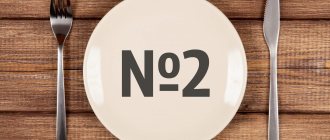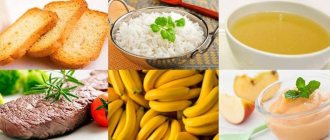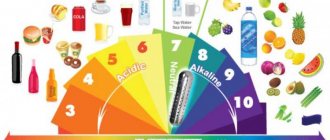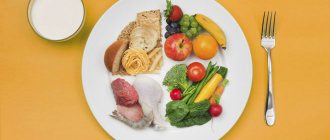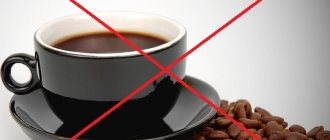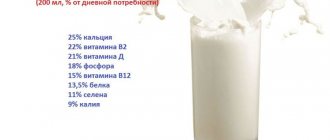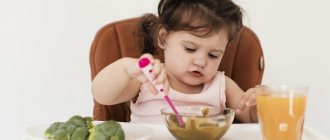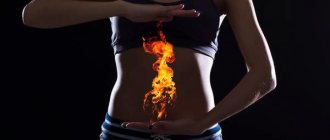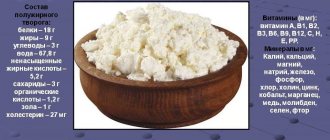Diet No. 3 is a special nutrition program developed by the famous Soviet scientist, gastroenterologist-nutritionist Manuil Pevzner. This therapeutic diet is prescribed for chronic intestinal diseases accompanied by constipation. Problems with regular bowel movements are quite common, most often caused by poor diet, sedentary lifestyle and poor quality food. Most working people, as well as students, are exposed to all these factors. Also, diet No. 3 is often prescribed to older people, since intestinal motility worsens with age.
Chronic, prolonged constipation leads to serious complications such as colitis and rectal diseases. The third diet according to Pevzner will prevent these consequences in time. Read more about the diet, what you can eat, how to cook and how to finally return to the regular menu.
The essence of diet No. 3
Content:
- The essence of diet No. 3
- Products for table No. 3
- Recipes for the table No. 3
- Menu for table No. 3
- Additional recommendations
The entire cycle of diets developed by M. Pevzner is aimed at treating various groups of diseases: gastritis, ulcers, pancreatitis, infectious diseases, urolithiasis, etc. Therapeutic diets created in the middle of the last century are still successfully used by doctors to this day. Each ration is called a “table” and has its own serial number.
The third of this cycle is prescribed to patients for constipation caused by chronic intestinal diseases. It is prescribed in the stage of mild or fading exacerbation, or without exacerbations. This table can also be recommended for patients with type 2 diabetes, taking into account the restrictions on foods high in “fast” carbohydrates. The goal of the diet is to restore motility of the gastrointestinal tract, improve metabolism, and stimulate the restoration of the mucous membrane of the stomach and intestines.
Gastrointestinal motility is the motor activity of the small and large intestines, so if it is disrupted, constipation and bloating occur. To stimulate physical activity, diet No. 3 is prescribed, which contains a sufficient amount of fiber, beneficial bifidobacteria and lactobacilli. Fiber is a plant fiber that activates intestinal motility and is found in most fresh vegetables and fruits. Lacto and bifidobacteria are beneficial microorganisms that inhabit the intestines and promote good digestion and absorption of food.
Products that cause rotting and fermentation in the intestines are prohibited. Therefore, table No. 3 provides for the exclusion of fried, fatty, pickled foods, smoked foods, whole milk, and carbonated drinks from the patient’s diet. These products are not recommended in large quantities for healthy people, and they are generally contraindicated for patients on the third diet.
Table No. 3 is a complete and balanced diet of 2500 kcal, which includes all the necessary food components, vitamins and minerals. It must contain proteins (about 100 g per day), so the basis of the diet will be fiber. If there is a lot of fiber but no protein, its coarse fibers swell and also lead to fermentation. In addition, you need to consume carbohydrates and fats (vegetable and animal) every day.
The diet is typical for most therapeutic diets. You need to consume 4-6 small servings per day. It is important not to wait too long between meals and eat every 3-4 hours. Portions should be moderate, not too large, but not scanty. The optimal volume of one meal should fit in two palms.
It is recommended to start the morning with a glass of cool water with honey or juice. At night it is useful to drink kefir, yogurt or eat some dried fruits; prunes are best. Porridge can be prepared with milk diluted 1:1 with water. Fried foods and baked foods with a crust are excluded.
To better understand the diet, consider the list of products: what is allowed, what is not.
Principles of dietary nutrition
To normalize intestinal function and prevent constipation, you need to adhere to the rules of a balanced diet:
- Maintain drinking regime . Drink at least two liters of clean water per day. Drink water in the morning on an empty stomach, and before each meal. The liquid helps soften stool and improves the passage of food through the intestines.
- Eat small meals . Eat food often: 4 to 6 times a day, in small portions. Fractional meals facilitate the process of digesting food and do not burden the gastrointestinal tract.
- Eat more fiber . Dietary fiber affects intestinal receptors and enhances peristalsis. This promotes better movement of feces through the intestines and facilitates the process of defecation.
- Avoid harmful foods . Excluding fast food and food containing preservatives from the diet has a beneficial effect on the condition of the intestines during constipation.
The basis of table number 3 includes products with a laxative effect. They enhance peristalsis and accelerate feces excretion. The dietary table excludes the consumption of foods that contribute to the activation of decay processes. These include, for example, fried foods, as well as foods with a high concentration of essential oils.
Products for table No. 3
Vegetables and fruits will form the basis of the diet. Only pickled, salty dishes, as well as sauerkraut, are excluded. Plant foods can be eaten raw or cooked. It is not necessary to grind them; on the third diet, it is healthier to eat large-sized food. Limit the consumption of potatoes, white cabbage and peas.
The following vegetables are prohibited: onions, radishes, garlic, radishes, turnips. All types of mushrooms, you can sometimes make broth from them, but do not eat the fruits themselves.
The following fruits and berries are prohibited: quince, blueberry and dogwood.
Flour products also perfectly increase intestinal motility. You can eat bran and wheat bread of 2 types. Rye - only if it is well tolerated (it is better to check with your doctor). Any baked goods must be made yesterday. Dried products, dry biscuits and cookies, and dryers are excellent.
It is prohibited to eat fresh baked goods, soft wheat noodles, butter and puff pastries, and baked goods made from premium flour.
Meat and fish should be lean (low-fat varieties): veal, beef, rabbit, chicken, hake, cod. You need to make sure that there are no tendons, fascia or veins in the fillet. Limit pork and lamb (no more than 2 times a week). Any seafood is allowed, except canned.
Smoked meat and fish and canned food made from them are prohibited.
Cereals can be included in soups, porridges, and casseroles. Porridges should be crumbly, not sticky. Soups and borscht - thick.
The following cereals are excluded from the diet: semolina and rice, which have a fixing effect. It is also necessary to sharply limit legumes and sago.
Eggs can be steamed, added to dishes, soft-boiled, or made into omelettes with vegetables or cheese.
Do not fry or hard-boil eggs.
From dairy products you can eat non-sour cottage cheese in its natural form, low-fat milk, natural yogurt. You can add cream, sour cream, and hard cheese to your dishes.
You need to exclude sharp types of cheese, dairy and fermented milk products above 5% fat.
It is advisable to consume homemade desserts: marmalade, jelly, marshmallows, marshmallows. Fruit soups, smoothies, salads and whole fruits (except prohibited ones) are suitable.
Products with chocolate and cream are excluded. Ready-made confectionery products can be eaten, but only a little and with normal tolerance (without cream and chocolate).
In diet No. 3, drinking regime is important. It is recommended to drink weak tea, without milk, chicory, any natural juices and compotes. You can also drink a decoction of rose hips and bran to improve the functioning of the gastrointestinal tract.
Excluded: natural coffee, cocoa, jelly, strong tea, especially with milk.
Sauces and spices can be used in minimal quantities and only natural ones. You can use greens to brighten the taste: parsley, dill, bay leaf.
You need to exclude hot spices and sauces: adjika, black and red pepper, horseradish, mustard, etc. Fatty types of sauces such as mayonnaise are also prohibited.
Food can be cooked in refined vegetable oil and butter. It is prohibited to use animal and cooking fats: margarine, spread. If diet 3 is prescribed for diabetes, additionally foods containing sugar are removed from the list: carrots, beets, bananas, confectionery, etc.
Compliance with diet No. 3 will not require much effort from the patient, because the diet is quite expanded. Thanks to this, creating your weekly menu will not be difficult. To eat deliciously on a diet and not violate the rules of therapeutic nutrition, you can add to the list of culinary recipes. Healthy eating is very common now, and it is very easy to find recipes that are suitable for your diet. Table number 3 is often prescribed for a long time, so treatment should not be a burden or torture. That's why it's so important to have a varied diet.
Meat casserole
- Salt 300 g minced meat
- add 2 egg whites and a little milk
- mix everything thoroughly and place on a greased baking sheet
- top the minced meat with grated carrots and steam
- After cooking is complete, brush the casserole with sour cream.
As a result of using the third dietary table , intestinal function gradually improves, its peristalsis is normalized, gas formation is reduced and stable stools are restored. In addition, switching to this form of nutrition is quite easy due to the wide variety of dishes and the availability of all ingredients.
Recipes for the table No. 3
Be sure to eat liquid food once a day. Soups are prepared from a whole piece of meat in a second broth; it is also good to use borscht and various cold soups in the menu. It is better to give preference to vegetable decoctions. Let's consider a complex version of cold vegetable soup and several unusual recipes from ordinary products.
Dietary beetroot
Have to take:
- 2 medium boiled beets;
- a slice of lemon;
- 0.5 liters of low-fat kefir;
- 1 tbsp. l. Sahara;
- chopped parsley and dill.
One beet should be cut into cubes, and the second should be grated on a fine or coarse grater. Squeeze the juice out of the grated one. Also cut the lemon into small pieces. Place beet cubes and lemon in a plate, sprinkle with sugar, pour kefir and beet juice on top. Add greens and stir. Keep the finished soup in the refrigerator.
Carrot jelly
Have to take:
- 100 g carrots;
- 50 g sugar;
- 10 g gelatin;
- citric acid.
Peeled carrots should be cut into arbitrary cubes or strips and cooked until fully cooked. Then pour half of the water into a separate container, pour sugar and citric acid into it, and bring to a boil. Grind the carrots with the remaining broth until smooth. Mix syrup, carrot mass and prepared gelatin. Divide the jelly into portions and cool in the refrigerator.
Diet mayonnaise
Have to take:
- 1 egg yolk;
- 50 ml vegetable oil;
- 1 tsp. sugar or substitute;
- 2 tsp. citric acid solution.
Beat the yolk with sugar or xylitol, slowly adding vegetable oil. When the mass becomes thick and homogeneous, you need to add citric acid to it and mix everything. This sauce is also suitable for diabetes.
To make it easier to create your therapeutic diet, consider a sample menu for a week for diet number three.
Menu for table No. 3
As already mentioned, a day you should definitely eat several raw fresh vegetables and fruits, a portion of soup or borscht and crumbly porridge.
On Monday
In the morning: non-sour cottage cheese with fresh fruit, not strong tea.
Lunch: vegetable soup with meatballs, slices of toasted bread.
For a snack: crackers with raisins, juice.
In the evening: buckwheat with steamed chicken, fresh tomato or vegetable salad.
Before bed: apple juice.
On Tuesday
In the morning: omelette with cheese and steamed tomatoes, chicory with milk or cream.
For lunch: beetroot soup with bread.
For a snack: tea with meringues or marshmallows.
In the evening: cauliflower casserole with meat.
Before bed: a little yogurt.
On Wednesday
In the morning: two soft-boiled eggs, boiled milk sausage, tea.
For lunch: diet borscht, a little sour cream, bread.
For a snack: baked apples with honey, a little cinnamon.
In the evening: stewed rabbit or veal cutlets, vegetable salad.
Before bed: a few prunes, juice.
On Thursday
In the morning: oatmeal porridge with milk and dried apricots, tea.
Lunch: fish soup with herbs, bread.
For a snack: dry bread, weak tea without milk, fruit.
In the evening: carrot pancakes, a little sour cream, juice.
Before bed: kefir.
On Friday
In the morning: steam omelette, sandwich with homemade pate, weak tea without milk.
For lunch: broth with meat and vegetables, crackers.
For a snack: toast from 2 types of bread, honey, tea or juice.
In the evening: baked fish, vinaigrette.
Before bed: natural yogurt, dried apricots.
On Saturday
In the morning: zucchini pancakes (without crust), a little sour cream, tea.
Lunch: vegetable soup with mushroom broth, crackers.
For a snack: fresh fruit.
In the evening: steamed cauliflower, boiled veal or a piece of lean pork.
Before bed: yogurt.
On Sunday
In the morning: oatmeal with fresh fruit, chicory with cream.
For lunch: okroshka (without potatoes).
For a snack: vegetable salad dressed with oil.
In the evening: noodle soup with minced meat, juice.
Before bed: a handful of prunes.
You can make personal amendments to the sample menu. The longer the diet is followed, the easier it will be to create a menu. The main thing is not to go beyond the rules of the diet and consult a doctor. It is not recommended to “prescribe” such a diet for yourself for gastrointestinal diseases. A healthy person can periodically use table No. 3, but with breaks.
